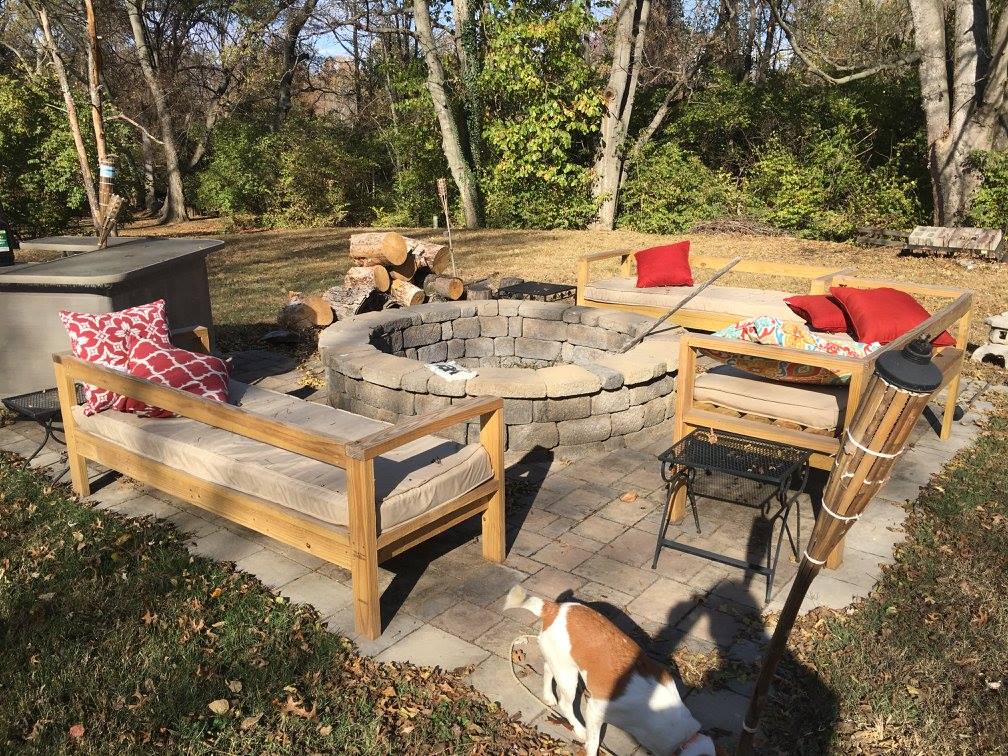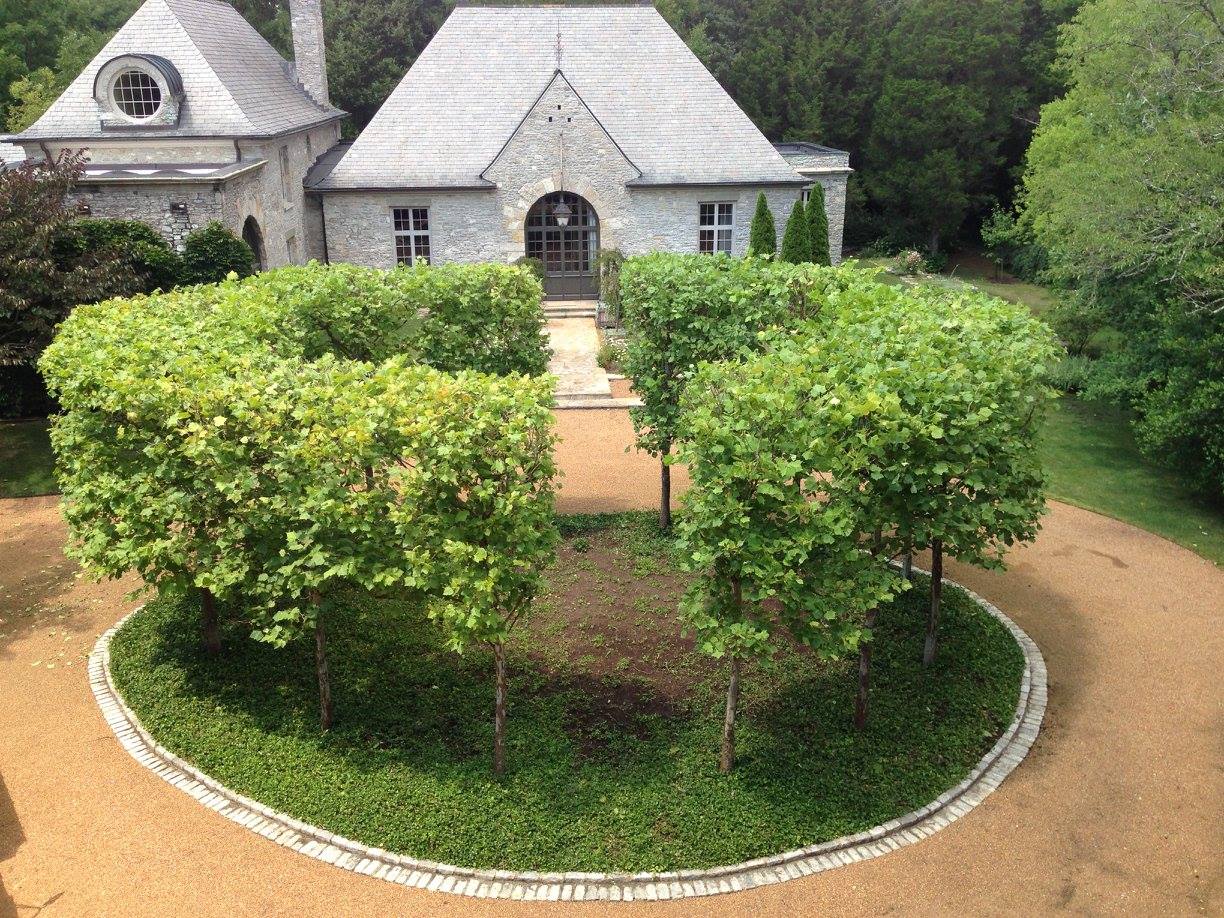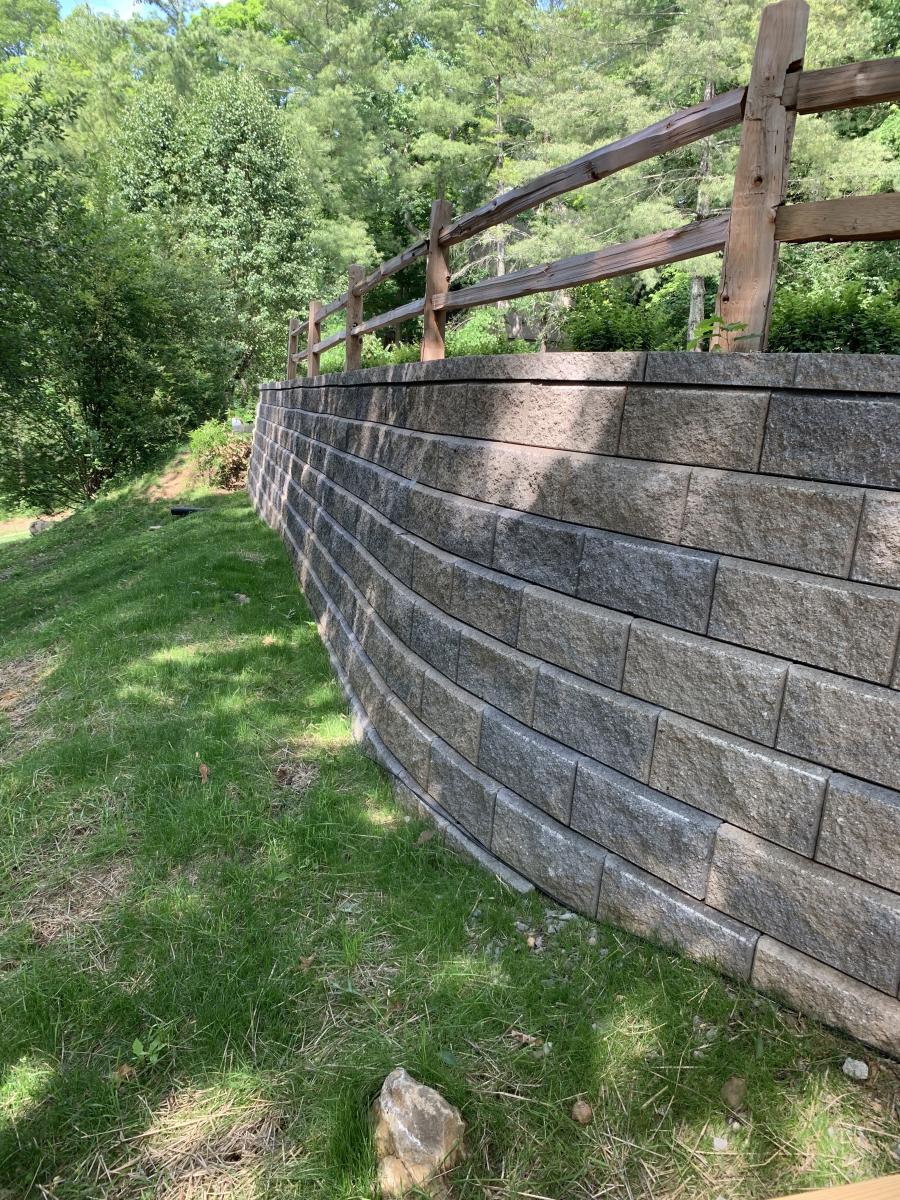Water features transform ordinary Middle Tennessee landscapes into extraordinary outdoor sanctuaries through professional landscape design. Whether you're seeking the gentle sound of a fountain in your Nashville courtyard, the dramatic impact of a waterfall in your Brentwood backyard, or the serene beauty of a natural pond on your Franklin estate, water elements provide unmatched beauty and tranquility.
In Davidson and Williamson Counties, water features offer particular advantages: they create cooling microclimates during hot summers, provide soothing sounds that mask urban noise, and establish focal points that enhance property values while supporting local wildlife through comprehensive landscape services.
The Appeal of Water Features in Middle Tennessee
Climate Benefits for Our Region
Middle Tennessee's climate makes water features especially valuable:
- Summer cooling: Evaporation creates natural air conditioning effects
- Humidity modification: Water features moderate extreme dry conditions
- Seasonal interest: Frozen elements create winter beauty
- Rainfall integration: Features can incorporate natural precipitation
- Microclimate creation: Cooler, more comfortable outdoor spaces
Wildlife and Ecological Benefits
Native wildlife thrives around thoughtfully designed water features:
- Bird habitat: Water sources attract diverse bird species
- Pollinator support: Shallow water areas serve butterflies and bees
- Amphibian habitat: Frogs and salamanders benefit from water features
- Ecosystem balance: Water features support beneficial insects
- Native plant integration: Aquatic plants enhance local ecology
Types of Water Features for Middle Tennessee Properties
Natural Ponds and Water Gardens
Ecosystem ponds create the most natural water feature experience:
Design Principles:
- Irregular shapes mimicking natural water bodies
- Shallow and deep zones supporting diverse aquatic life
- Native plant integration using Tennessee aquatic species
- Natural filtration through biological processes
- Seasonal adaptation designed for year-round function
Size Considerations:
- Small water gardens: 4x6 feet for compact properties
- Medium ponds: 8x12 feet for suburban landscapes
- Large estate ponds: 20x30 feet or larger for expansive properties
- Depth requirements: 18-24 inches minimum, 3+ feet for fish
Aquatic Plant Selection:
- Emergent plants: Cattails, arrowhead, pickerel rush
- Floating plants: Water lilies, lotus, water hyacinth
- Submerged plants: Hornwort, cabomba, vallisneria
- Marginal plants: Cardinal flower, monkey flower, blue flag iris
Waterfalls and Streams
Moving water features create dramatic visual and auditory impact:
Natural Waterfall Design:
- Rock placement using Tennessee fieldstone and limestone
- Water flow patterns creating varied sounds and movements
- Pool integration with multiple cascade levels
- Landscape integration connecting to existing terrain
Formal Waterfall Styles:
- Architectural integration matching home design elements
- Geometric forms with clean lines and defined edges
- Material coordination using consistent stone and finishes
- Lighting design for evening enjoyment
Stream Features:
- Meandering courses following natural drainage patterns
- Variable flow rates creating different water sounds
- Rock and boulder placement directing water flow
- Planting integration softening hardscape elements
Fountains and Sculptural Features
Architectural water features provide formal focal points:
Traditional Fountain Styles:
- Tiered designs creating classical elegance
- Wall fountains maximizing impact in smaller spaces
- Urn and vessel fountains offering portable beauty
- Spitting features adding playful water movement
Contemporary Fountain Design:
- Geometric forms complementing modern architecture
- Minimal aesthetics emphasizing clean lines
- Mixed materials combining stone, metal, and water
- Integrated lighting creating dramatic evening effects
Custom Sculptural Elements:
- Artistic integration incorporating unique design elements
- Cultural themes reflecting personal interests
- Native material emphasis using local stone and metal
- Scale relationships appropriate to landscape context
Design Integration with Middle Tennessee Architecture
Historic Franklin Properties
Traditional homes require sensitive water feature integration:
Period-Appropriate Styles:
- Formal reflecting pools echoing antebellum garden design
- Stone-lined channels reminiscent of historic millstreams
- Classical fountains with traditional proportions
- Native stone construction using Tennessee materials
Landscape Compatibility:
- Formal garden integration connecting to structured plantings
- Axis alignment following established landscape geometry
- View considerations from historic home interiors
- Maintenance accessibility preserving landscape integrity
Contemporary Brentwood Estates
Modern luxury homes allow bold water feature statements:
Architectural Integration:
- Infinity edge pools connecting to water features
- Glass and steel elements incorporating contemporary materials
- Geometric water channels following home lines
- Rooftop water features maximizing dramatic impact
Technology Integration:
- Automated controls for water flow and lighting
- Remote monitoring systems for maintenance efficiency
- Energy-efficient pumps reducing operational costs
- Smart irrigation integration with landscape systems
Traditional Nashville Neighborhoods
Established communities benefit from scaled-appropriate features:
Residential Scale Features:
- Courtyard fountains creating intimate spaces
- Garden pond integration within existing landscapes
- Privacy screening using water walls and features
- Noise masking buffering urban sounds
Water Feature Engineering for Local Conditions
Soil Considerations in Middle Tennessee
Clay-heavy soils present unique challenges and opportunities:
Soil Benefits:
- Natural water retention reducing liner requirements
- Stable foundations supporting heavy stone features
- Minimal leakage when properly prepared
- Long-term stability with proper drainage design
Design Adaptations:
- Drainage integration managing seasonal water fluctuations
- Expansion accommodation allowing for soil movement
- Foundation design preventing settling and cracking
- Overflow planning handling heavy rainfall events
Seasonal Operation Strategies
Four-season functionality requires thoughtful planning:
Spring Startup:
- System cleaning after winter shutdown
- Equipment inspection ensuring proper function
- Plant division managing aquatic vegetation
- Water quality testing and adjustment
Summer Operation:
- Evaporation management maintaining water levels
- Algae control through natural and mechanical means
- Equipment cooling protecting pumps and filters
- Wildlife support providing critical water sources
Fall Preparation:
- Leaf management preventing organic buildup
- Plant trimming preparing aquatic vegetation
- Equipment servicing before winter shutdown
- Water treatment preparing for temperature changes
Winter Protection:
- Freeze prevention using heaters and aeration
- Equipment storage protecting sensitive components
- Structural protection preventing ice damage
- Aesthetic maintenance preserving winter beauty
Plant Integration and Aquatic Ecosystems
Native Aquatic Plants for Tennessee
Regional plant selections ensure natural compatibility:
Emergent Species:
- Blue Flag Iris (Iris versicolor): Purple flowers, 2-3 feet tall
- Cardinal Flower (Lobelia cardinalis): Brilliant red spikes, hummingbird magnet
- Arrowhead (Sagittaria latifolia): White flowers, distinctive leaves
- Pickerel Rush (Pontederia cordata): Blue flower spikes, heart-shaped leaves
Floating and Submerged Plants:
- American Lotus (Nelumbo lutea): Large yellow flowers, impressive foliage
- Water Lily species: Various colors, spring through fall blooms
- Hornwort (Ceratophyllum demersum): Submerged oxygenator
- Wild Celery (Vallisneria americana): Grass-like submerged plant
Marginal Plantings:
- Swamp Milkweed (Asclepias incarnata): Pink flowers, monarch butterfly host
- Blue Lobelia (Lobelia siphilitica): Late summer blue flowers
- Monkey Flower (Mimulus ringens): Purple snapdragon-like blooms
- Lizard's Tail (Saururus cernuus): White drooping flower spikes
Ecosystem Balance and Maintenance
Natural balance reduces maintenance requirements:
Biological Filtration:
- Beneficial bacteria processing organic waste
- Plant uptake removing excess nutrients
- Natural competition preventing algae overgrowth
- Seasonal cycles maintaining long-term balance
Wildlife Integration:
- Fish selection choosing species appropriate for climate
- Predator protection providing shelter from herons and raccoons
- Breeding areas supporting amphibian reproduction
- Winter survival planning for cold weather wildlife needs
Water Feature Maintenance in Middle Tennessee
Seasonal Maintenance Requirements
Climate-specific care ensures long-term success:
Spring Tasks:
- Equipment startup checking all mechanical systems
- Water quality testing ensuring balanced chemistry
- Plant management dividing and replanting as needed
- Debris removal clearing winter accumulation
Summer Maintenance:
- Algae management using natural and biological controls
- Water level monitoring compensating for evaporation
- Equipment cleaning maintaining pumps and filters
- Plant pruning controlling excessive growth
Fall Preparation:
- Leaf netting preventing organic debris accumulation
- Plant harvesting removing excess vegetation
- Equipment inspection preparing for winter shutdown
- Water treatments stabilizing chemistry for cold months
Winter Care:
- Ice prevention using heaters and bubblers
- Equipment protection storing or winterizing components
- Wildlife support maintaining open water areas
- Structural monitoring watching for freeze damage
Professional Maintenance Services
Expert care preserves water feature investments:
Annual Service Programs:
- Comprehensive inspections identifying potential issues
- Equipment servicing maintaining optimal performance
- Plant management ensuring healthy aquatic ecosystems
- Water quality management maintaining chemical balance
Specialized Services:
- Liner repair addressing leaks and damage
- Pump replacement upgrading to more efficient systems
- Lighting maintenance preserving evening beauty
- Structural repairs addressing settling or damage
Cost Considerations and Return on Investment
Initial Investment Factors
Water feature costs vary significantly by type and complexity:
Budget Ranges:
- Small fountains: $2,000-8,000 installed
- Garden ponds: $5,000-15,000 depending on size
- Natural pools: $15,000-50,000 for comprehensive systems
- Custom waterfalls: $10,000-25,000 based on complexity
Cost Variables:
- Site preparation: Excavation and utility requirements
- Material selection: Natural stone vs. manufactured options
- System complexity: Simple vs. sophisticated filtration
- Professional installation: Design and construction expertise
Operational Costs
Ongoing expenses should be considered in planning:
Utility Costs:
- Electricity: Pump and lighting operation
- Water: Initial filling and evaporation replacement
- Seasonal variations: Higher summer usage
Maintenance Expenses:
- Professional service: Annual maintenance contracts
- Replacement parts: Pumps, filters, and equipment
- Plant materials: Seasonal additions and replacements
- Water treatments: Chemistry and biological additives
Property Value Enhancement
Water features provide excellent return on investment:
Market Research Findings:
- Property value increase: 5-15% for quality water features
- Buyer appeal: Strong attraction for luxury amenities
- Marketability: Faster sales in competitive markets
- Competitive advantage: Differentiation from similar properties
Technology Integration and Smart Features
Automation and Control Systems
Modern technology enhances water feature functionality:
Remote Control Capabilities:
- Smartphone apps controlling pumps and lighting
- Automated scheduling for optimal operation
- Sensor integration monitoring water levels and quality
- Weather integration adjusting operation for conditions
Energy Efficiency:
- Variable speed pumps reducing electrical consumption
- LED lighting systems minimizing power usage
- Solar integration for sustainable operation
- Timer controls optimizing operation schedules
Safety and Security Features
Advanced systems protect investments and ensure safety:
Monitoring Systems:
- Water level sensors preventing dry running
- Temperature monitoring protecting fish and plants
- Security cameras monitoring for vandalism or wildlife issues
- Alarm systems alerting to equipment failures
Environmental Considerations and Sustainability
Water Conservation Strategies
Sustainable design minimizes environmental impact:
Efficient Design:
- Recirculating systems minimizing water waste
- Rainwater harvesting using natural precipitation
- Drought-resistant plants reducing irrigation needs
- Natural filtration reducing chemical requirements
Native Ecosystem Support:
- Indigenous plants supporting local wildlife
- Habitat creation benefiting regional species
- Pollinator support enhancing local ecology
- Chemical-free maintenance protecting water quality
Climate Resilience
Future-focused design addresses changing conditions:
Adaptation Strategies:
- Flexible water levels accommodating varying precipitation
- Temperature management for extreme weather events
- Overflow planning handling increased storm intensity
- Equipment protection weathering severe conditions
Conclusion: Creating Your Water Feature Oasis
Water features offer Middle Tennessee homeowners unparalleled opportunities to enhance their outdoor living spaces while supporting local ecology and increasing property values. From the gentle babble of a natural stream to the formal elegance of a courtyard fountain, water elements transform landscapes into personal retreats.
The key to success lies in selecting appropriate features for your specific site conditions, integrating them thoughtfully with existing architecture and landscapes, and maintaining them properly for long-term beauty and function.
Ready to add the tranquil beauty of water to your landscape? Contact Crenshaw Landscaping for expert water feature design and installation. Our 35+ years of experience in Nashville, Franklin, Brentwood, and throughout Middle Tennessee ensures your water feature project will provide lasting beauty, ecological benefits, and enhanced property value.
Crenshaw Landscaping specializes in custom water features throughout Middle Tennessee. Call (615) 585-8187 to schedule a consultation and discover how a professionally designed water feature can transform your property into a peaceful oasis that supports local wildlife while enhancing your outdoor living experience.



